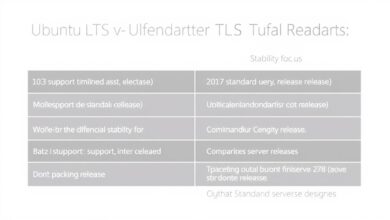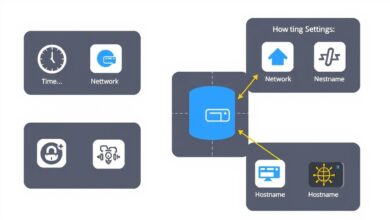Choosing the Right Control Panel: A Deep Dive into cPanel, Plesk, and Webmin Basics

Managing a web server can seem daunting, especially if you’re not comfortable working directly with a command-line interface (CLI). Thankfully, web hosting control panels provide graphical user interfaces (GUIs) to simplify server administration. But with several options available, choosing a control panel that fits your needs is crucial. This guide explores three popular choices: cPanel, Plesk, and Webmin, covering their features, configuration basics, and ideal use cases.
Making the right decision early on saves time and potential migration headaches later. Whether you’re launching your first website or managing multiple servers, understanding these tools is key.
What is a Web Hosting Control Panel?
A web hosting control panel is a web-based interface that allows administrators and users to manage their servers and hosted services. Instead of typing complex commands, you can perform tasks through a user-friendly dashboard. Common functions include:
- Website and domain management
- Email account creation and management
- Database administration (MySQL, PostgreSQL)
- FTP user management
- File management
- SSL certificate installation
- Software installation (e.g., WordPress, Joomla)
- Backup configuration
- Viewing server statistics and logs
Essentially, they act as a bridge between the user and the underlying server operating system (usually Linux), making complex tasks accessible.
cPanel: The Industry Standard
cPanel is arguably the most well-known control panel, particularly dominant in the shared hosting market. It runs exclusively on Linux (CentOS, AlmaLinux, Rocky Linux, Ubuntu). It’s often bundled with WHM (WebHost Manager), where WHM is used by administrators to manage the server and cPanel is used by end-users to manage their individual hosting accounts.
Key Features & Benefits:
- User-Friendly Interface: Generally considered very intuitive, even for beginners.
- Wide Compatibility: Vast support from hosting providers and third-party applications.
- Rich Feature Set: Covers almost every aspect of website and server management needed by end-users.
- Strong Community Support: Easy to find tutorials and help online.
Drawbacks:
- Cost: It’s a commercial product with licensing fees that have increased significantly in recent years.
- Linux Only: Not an option for Windows hosting environments.
Configuration Basics:
Access is typically via `your-domain.com:2083` (SSL) or `your-domain.com:2082` (non-SSL). Initial setup often involves configuring basic server settings in WHM (if applicable) like hostname and nameservers, followed by creating hosting packages and individual cPanel accounts.
[Hint: Insert image/video of cPanel dashboard interface here]Plesk: The Versatile Competitor
Plesk is another leading commercial control panel, known for its clean interface and broader operating system support, running on both Linux (Debian, Ubuntu, CentOS, etc.) and Windows Server.
Key Features & Benefits:
- Cross-Platform: Supports both Linux and Windows servers.
- Modern UI: Offers a clean, task-oriented interface that many find appealing.
- Developer-Friendly: Strong integration with tools like Docker, Git, and Node.js.
- Scalability: Well-suited for managing multiple servers and different hosting types (shared, VPS, dedicated).
- Security Focus: Includes tools like Fail2ban, ModSecurity, and server-wide security policies.
- Tiered Licensing: Pricing often depends on the number of domains managed, potentially offering cost savings for smaller setups compared to cPanel’s account-based model.
Drawbacks:
- Cost: Still a premium, commercial product.
- Feature Complexity: The extensive features might feel overwhelming for absolute beginners compared to cPanel’s initial simplicity.
Configuration Basics:
Accessed typically via `your-domain.com:8443`. Plesk uses “Service Plans” to define resource allocation for customers/subscriptions. Initial configuration involves setting up the administrator details, hostname, and IP addresses.
[Hint: Insert image/video of Plesk dashboard interface here]Webmin: The Powerful Free Alternative
Webmin is a free, open-source control panel offering immense flexibility and control over your Linux/Unix server. It’s less focused purely on *web hosting* out-of-the-box compared to cPanel/Plesk and more on general *server administration*, but it can be extended with modules like Virtualmin (for hosting management) or Usermin (for end-user tasks).
Key Features & Benefits:
- Free and Open Source: No licensing costs.
- Highly Customizable: A modular design allows you to manage almost every aspect of the server (Apache, BIND, Postfix, system users, etc.).
- Powerful: Provides deep access to system configuration files and services.
- Wide OS Support: Runs on most Unix-like systems.
Drawbacks:
- Steeper Learning Curve: The interface is more functional than polished; requires more technical understanding than cPanel or Plesk.
- Less Hosting-Centric (by default): Requires installing modules like Virtualmin for comprehensive hosting features comparable to paid panels.
- Support: Relies on community forums and documentation rather than dedicated commercial support.
Configuration Basics:
Accessed usually via `your-server-ip:10000`. Configuration involves navigating through various modules to manage specific services. For hosting, installing Virtualmin adds a layer specifically for managing domains, websites, and users, making choosing this control panel viable for hosting providers too.
[Hint: Insert image/video of Webmin dashboard interface here]Making the Choice: cPanel vs Plesk vs Webmin
There’s no single “best” panel. Choosing a control panel depends entirely on your specific needs:
- For Beginners & Shared Hosting: cPanel is often the easiest entry point due to its widespread use and simple UI.
- For Agencies, Developers & Windows Users: Plesk offers versatility, modern tools, and cross-platform support.
- For Experienced Sysadmins & Budget-Conscious Users: Webmin (with Virtualmin) provides unparalleled control and flexibility at no cost, provided you have the technical expertise.
Consider these factors:
- Budget: Are you willing to pay for licensing (cPanel/Plesk) or do you prefer a free option (Webmin)?
- Operating System: Do you need Windows support (Plesk)?
- Technical Skill: How comfortable are you with server administration?
- Required Features: Do you need specific integrations (like Docker/Git in Plesk) or just basic web/email/database management?
For more detailed comparisons on specific features, you can often find extensive documentation on the official product websites, like the Plesk Features page.
Want to learn more about server setup? Check out our guide on basic server security practices.
Conclusion
Control panels like cPanel, Plesk, and Webmin significantly lower the barrier to entry for server management. cPanel remains a user-friendly standard, Plesk offers modern versatility across platforms, and Webmin delivers powerful, free control for those with the technical know-how. By evaluating your budget, technical comfort level, required features, and operating system needs, you can confidently make the right choice for efficiently managing your web hosting environment. Carefully choosing your control panel is a foundational step towards a smooth server management experience.




